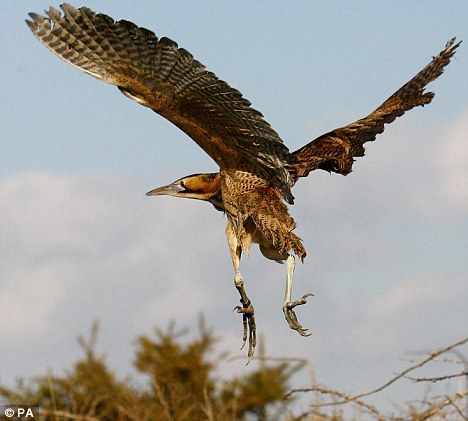UK Rarest Wildlife On Brink After Devastating Wildfires

Table of Contents
Species Most Affected by Wildfires
The impact of the wildfires extends far beyond the immediate destruction of vegetation. Many of the UK's most vulnerable creatures are now facing an existential threat.
The Impact on Endangered Birds
Several endangered bird species have suffered significantly. The hen harrier, a bird of prey already struggling with habitat loss, has seen its breeding grounds decimated by the fires. Similarly, the nightjar, reliant on specific heathland habitats for nesting, has experienced a dramatic reduction in its population. The Dartford warbler, a species already designated as endangered in the UK, has also been severely impacted.
- Hen Harrier: Population decline exacerbated by wildfire-induced habitat loss, impacting breeding success. Specific nesting sites destroyed, reducing available territories.
- Nightjar: Loss of crucial heathland habitat, impacting nesting and foraging opportunities. Increased vulnerability to predation due to habitat fragmentation.
- Dartford Warbler: Existing small populations further reduced due to fire damage. Difficulty in re-establishing territories in burned areas.
Ongoing conservation programs, such as habitat restoration and supplementary feeding initiatives, are attempting to mitigate these losses, but the long-term impact remains uncertain.
Reptiles and Amphibians Under Threat
Reptiles and amphibians are particularly vulnerable to wildfires due to their cold-blooded nature and dependence on specific microclimates. The sand lizard, with its restricted range and reliance on heathland, has been severely affected. Similarly, the natterjack toad, which breeds in specific bog habitats, has suffered devastating losses.
- Sand Lizard: Loss of basking sites and foraging grounds. Increased vulnerability to desiccation in burned areas.
- Natterjack Toad: Destruction of breeding ponds and foraging habitats. Reduction in suitable breeding sites.
The extreme heat generated by the wildfires poses a direct threat to these cold-blooded creatures, leading to mortality and reduced breeding success. Conservation efforts are focusing on creating new breeding sites and restoring damaged habitats, but these are long-term and challenging projects.
The Fate of Invertebrate Communities
Often overlooked, invertebrate populations play a critical role in the UK's ecosystems. Wildfires have caused significant declines in insect diversity, impacting pollination and the food chain. The loss of these essential invertebrates has cascading effects on other species.
- Pollinators: Reduction in pollinator populations, impacting plant reproduction and potentially impacting food supplies for other animals.
- Decomposers: Disruption of decomposition processes, affecting nutrient cycling and soil health.
- Prey Species: Decline in insect prey, affecting the survival of insectivorous birds and other animals.
Research is underway to assess the full extent of the damage to invertebrate communities and the long-term implications for UK biodiversity.
The Extent of Habitat Loss and Degradation
The scale of habitat destruction caused by these wildfires is alarming. Hundreds of hectares of vital habitats, including heathland, woodland, and peat bogs, have been reduced to ash.
Loss of Key Habitats
- Heathland: Significant areas of heathland, crucial habitat for many threatened species, have been completely destroyed.
- Woodland: Wildfires have damaged ancient woodlands, impacting their biodiversity and resilience.
- Peat Bogs: The destruction of peat bogs releases significant amounts of carbon dioxide, further exacerbating climate change.
Maps and satellite imagery vividly illustrate the extent of the devastation, highlighting the geographical areas most affected across the UK.
Long-Term Ecological Consequences
The long-term consequences of these wildfires are far-reaching. Soil erosion and changes in water quality are likely, further threatening the recovery of affected ecosystems. The loss of biodiversity will negatively impact the resilience of the affected areas, making them more vulnerable to future disturbances.
Conservation Efforts and Future Prospects
A concerted effort is underway to mitigate the damage and protect the remaining UK rarest wildlife.
Current Conservation Initiatives
Various conservation organizations, including the RSPB, the Wildlife Trusts, and Natural England, are actively involved in rescue and recovery efforts. These initiatives include habitat restoration, captive breeding programs for some critically endangered species, and community engagement activities.
- Habitat Restoration: Re-planting and rehabilitation of burned areas to restore crucial habitats.
- Captive Breeding: Breeding programs for some of the most severely affected species to bolster wild populations.
- Monitoring: Ongoing monitoring of affected species to assess population trends and inform conservation strategies.
Significant funding is needed to support these long-term efforts.
The Role of Public Awareness and Support
Public awareness and support are crucial for the success of conservation efforts. By raising awareness of the threats facing the UK's rarest wildlife and promoting responsible behaviour in natural spaces, we can help prevent future wildfires.
- Donations: Supporting conservation charities working to protect endangered species.
- Volunteering: Participating in habitat restoration and monitoring projects.
- Responsible Behaviour: Avoiding activities that could increase the risk of wildfires, such as discarding lit cigarettes and using barbecues responsibly.
The future of the UK's rarest wildlife hangs in the balance. Learn more about how you can help protect these vulnerable species and contribute to their recovery. Support organizations dedicated to UK biodiversity conservation, and help us safeguard the future of endangered UK species and protecting UK wildlife. Let’s work together to ensure these precious creatures have a chance to thrive.

Featured Posts
-
 Ftc V Meta A Deep Dive Into The Antitrust Case
May 13, 2025
Ftc V Meta A Deep Dive Into The Antitrust Case
May 13, 2025 -
 Gibraltar Industries Rock Earnings Preview What To Expect
May 13, 2025
Gibraltar Industries Rock Earnings Preview What To Expect
May 13, 2025 -
 Unexpected Wins For Duterte Supporters In Philippine Midterm Elections
May 13, 2025
Unexpected Wins For Duterte Supporters In Philippine Midterm Elections
May 13, 2025 -
 Changes To The Nhl Draft Lottery An In Studio Draw
May 13, 2025
Changes To The Nhl Draft Lottery An In Studio Draw
May 13, 2025 -
 Leonardo Di Caprios Met Gala Appearance With Vittoria Ceretti
May 13, 2025
Leonardo Di Caprios Met Gala Appearance With Vittoria Ceretti
May 13, 2025
